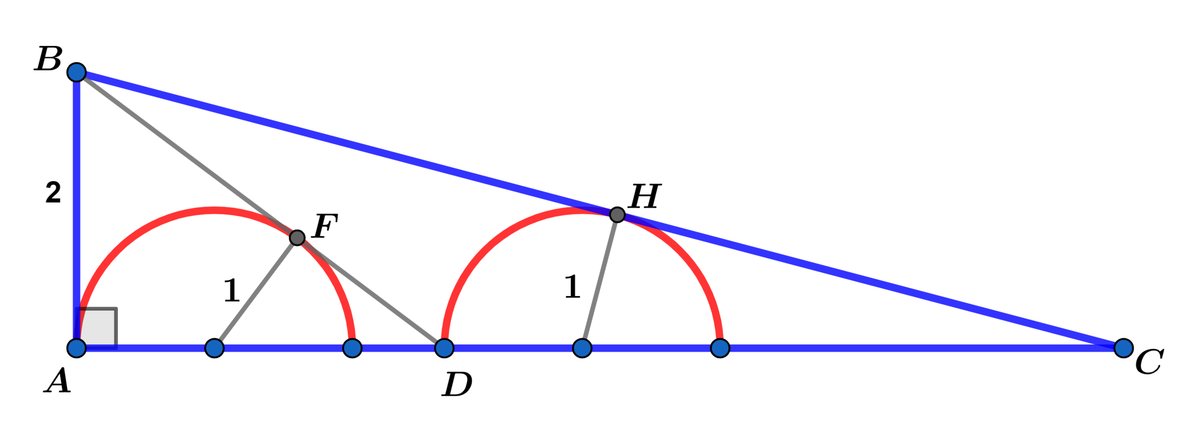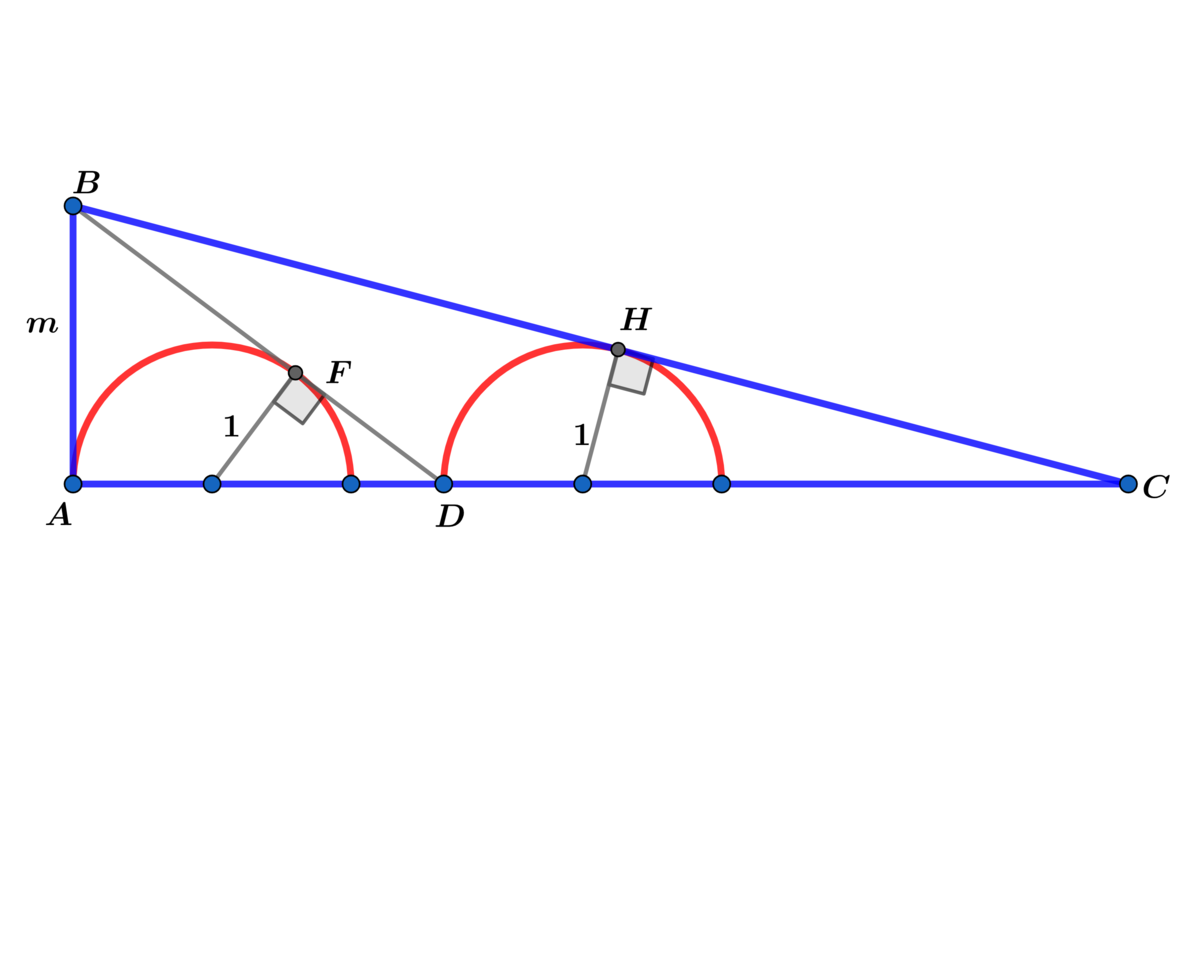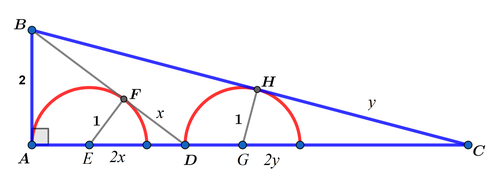What's the area of the right triangle!

In right △ A B C with A B = 2 , B D and B C are tangent to the two inscribed semicircles with radius 1 at F and H respectively.
If A △ A B C = d a ( b + c ) , where a , b , c and d are coprime positive integers, find a + b + c + d .
The answer is 61.
This section requires Javascript.
You are seeing this because something didn't load right. We suggest you, (a) try
refreshing the page, (b) enabling javascript if it is disabled on your browser and,
finally, (c)
loading the
non-javascript version of this page
. We're sorry about the hassle.
2 solutions
What would happen if you kept extending the diagram? So, draw another unit semicircle through C , construct the tangent from B , mark the intersection with the extended line A C , and so on. Is there a "nice" formula for the area after n semicircles?
Log in to reply
I worked out the following below with Area A 1 = m 2 − 1 m 3 , where m is the height of right △ A B C .
Let d 1 = m 2 − 1 2 m 2
and for n ≥ 1 define:
d n + 1 = m 2 − 1 m ( ( d n + 1 ) m + ( d n + 1 ) 2 + m 2 − 1 ) and A n + 1 = 2 m d n + 1 .
I'm going to post the problem as follows:

Let m > 1 .
In right △ A B C with A B = m , B D and B C are tangent to the two inscribed unit semicircles at F and H respectively.
Extend the above diagram to n congruent unit circles as follows:
Draw another unit semicircle through C and construct the tangent from B and mark the intersection with the extended line AC and continue this process for the n unit semicircles.
(1) Find the a formula for the area of the right triangle formed which contains the n unit semicircles.
(2) Using m = 2 and n = 1 0 write a program to compute the area of A n .
I arrived at A 1 0 = 2 4 7 3 . 0 0 4 6 3 8 6 7 1 8 7 5 .

Let the centers of the left and right semicircle be E and G . Note that △ D E F and △ A B D are similar. If F D = x , A D = 2 x . By Pythagorean theorem , we have:
E F 2 + D F 2 = D E 2 = ( A D − A E ) 2 1 2 + x 2 1 + x 2 3 x 2 3 x ⟹ x A D = ( 2 x − 1 ) 2 = 4 x 2 − 4 x + 1 = 4 x = 4 = 3 4 = 2 x = 3 8 Since x = 0
Similar, since △ C H G and △ A B C are similar. If H C = y , A C = 2 y and
H G 2 + C H 2 1 2 + y 2 1 + y 2 2 7 y 2 − 1 3 2 y + 1 1 2 ⟹ y = C G 2 = ( A C − A D − D G ) 2 = ( 2 y − 3 8 − 1 ) 2 = 4 y 2 − 3 4 4 y + 9 1 2 1 = 0 = 9 2 2 + 2 3 7 The small y < 2
Since A t r i a n g l e A B C = 2 1 ⋅ A B ⋅ A C = 2 y = 9 4 ( 1 1 + 3 7 ) . Therefore a + b + c + d = 4 + 1 1 + 3 7 + 9 = 6 1 .
△ A B D ∼ △ E F D ⟹ 1 2 = y B D ⟹ B D = 2 y
Using the Pythagorean theorem on △ A B D ⟹ 4 y 2 = 4 + ( 1 + y ) 2 ⟹
3 y 2 − 2 y − 5 = 0 ⟹ y = 3 5 dropping the negative root ⟹ A D = 3 8 ⟹
A G = 3 1 1
△ A B C ∼ △ G H C ⟹ 1 2 = x B C ⟹ B C = 2 x
Using the Pythagorean theorem on △ A B C ⟹ 4 x 2 = 4 + ( 3 1 1 + x ) 2 ⟹
3 6 x 2 = 3 6 + 1 2 1 + 6 6 x + 9 x 2 ⟹ 2 7 x 2 − 6 6 x − 1 5 7 = 0 ⟹ x = 9 1 1 + 4 3 7
dropping the negative root ⟹ A C = 3 1 1 + 9 1 1 + 4 3 7 =
9 4 ( 1 1 + 3 7 ) ⟹ A △ A B C = 9 4 ( 1 1 + 3 7 ) = d a ( b + c )
⟹ a + b + c + d = 6 1 .